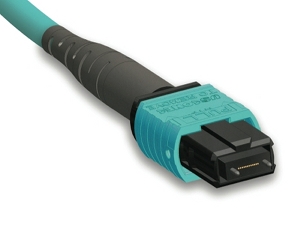The MPO connector is defined by IEC-61754-76, it is a multiple fiber core connector, “Fibre optic interconnecting devices and passive components – Fiber optic connector interfaces – Part 7: Type MPO connector family”; and TIA-604-5-D, ”Fiber Optic Connector Intermateability Standard, Type MPO”.
The term MTP is a registered trademark of US Conec. This is the term used by US Conec to describe their connector. The US Conec MTP product is fully compliant with the MPO standards. As such, the MTP connector is an MPO connector.

The MTP connector is described by US Conec as, “a high performance MPO connector with multiple engineered product enhancements to improve optical and mechanical performance when compared to generic MPO connectors.” These enhancements provide several product features, including the ability to change gender or to re-polish in the field; a floating ferrule to improve performance under load; and elliptical guide pins to provide for tight tolerance alignment. Some of these features are covered under patents.
Solutions providers that utilize US Conec components, directly or by licenses, are allowed, and encouraged, to utilize the MTP name to describe their products. The marketing effort of US Conec is directed at making the term MTP ubiquitous for describing an MPO connector. If consultants and engineers begin to specify MTP connectors, instead of MPO connectors, US Conec, and its licensees, effectively become the sole source for sub-components in MPO solutions.
Solutions providers who use the more generic MPO terminology may or may not utilize US Conec components, as US Conec is one of several manufacturers of MPO connectors. MTP/MPO manufacturers does not typically disclose the specific suppliers of sub-components utilized in our solutions. As such, MPO manufacturers does not use the MTP name in describing our MPO solutions.
Additionally, it is important to note that the industry is constantly evolving, with continuous advancements in fabrication, assembly, polishing, cleaning and testing. As such, components assembled from alternate sub- component suppliers can also achieve higher performance levels. In other words, products can be manufactured with sub-components from alternate suppliers, also attaining better than standard performance.
Conclusion:
As such, we need to maintain the flexibility to work with multiple sub-component suppliers to achieve the high performance levels delivered by our solutions. Comparisons of competitive product lines should be based on performance claims, and not the call out of specific trademarked names of sub-assemblies.